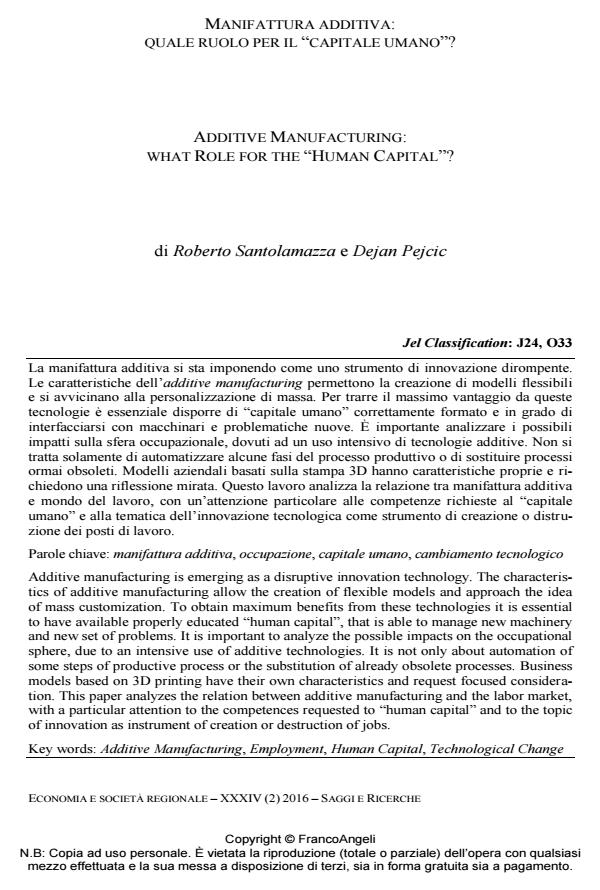Manifattura additiva: quale ruolo per il "capitale umano"?
Titolo Rivista ECONOMIA E SOCIETÀ REGIONALE
Autori/Curatori Roberto Santolamazza, Dejan Pejcic
Anno di pubblicazione 2016 Fascicolo 2016/2
Lingua Italiano Numero pagine 32 P. 113-144 Dimensione file 341 KB
DOI 10.3280/ES2016-002008
Il DOI è il codice a barre della proprietà intellettuale: per saperne di più
clicca qui
Qui sotto puoi vedere in anteprima la prima pagina di questo articolo.
Se questo articolo ti interessa, lo puoi acquistare (e scaricare in formato pdf) seguendo le facili indicazioni per acquistare il download credit. Acquista Download Credits per scaricare questo Articolo in formato PDF

FrancoAngeli è membro della Publishers International Linking Association, Inc (PILA)associazione indipendente e non profit per facilitare (attraverso i servizi tecnologici implementati da CrossRef.org) l’accesso degli studiosi ai contenuti digitali nelle pubblicazioni professionali e scientifiche
La manifattura additiva si sta imponendo come uno strumento di innovazione dirompente. Le caratteristiche dell’additive manufacturing permettono la creazione di modelli flessibili e si avvicinano alla personalizzazione di massa. Per trarre il massimo vantaggio da queste tecnologie è essenziale disporre di "capitale umano" correttamente formato e in grado di interfacciarsi con macchinari e problematiche nuove. È importante analizzare i possibili impatti sulla sfera occupazionale, dovuti ad un uso intensivo di tecnologie additive. Non si tratta solamente di automatizzare alcune fasi del processo produttivo o di sostituire processi ormai obsoleti. Modelli aziendali basati sulla stampa 3D hanno caratteristiche proprie e richiedono una riflessione mirata. Questo lavoro analizza la relazione tra manifattura additiva e mondo del lavoro, con un’attenzione particolare alle competenze richieste al "capitale umano" e alla tematica dell’innovazione tecnologica come strumento di creazione o distruzione dei posti di lavoro.
Parole chiave:Manifattura additiva, occupazione, capitale umano, cambiamento tecnologico
- Soddisfazione lavorativa nelle fabbriche del Veneto: come incentivarla? Ambra Galeazzo, in ECONOMIA E SOCIETÀ REGIONALE 1/2019 pp.141
DOI: 10.3280/ES2019-001010
Roberto Santolamazza, Dejan Pejcic, Manifattura additiva: quale ruolo per il "capitale umano"? in "ECONOMIA E SOCIETÀ REGIONALE " 2/2016, pp 113-144, DOI: 10.3280/ES2016-002008